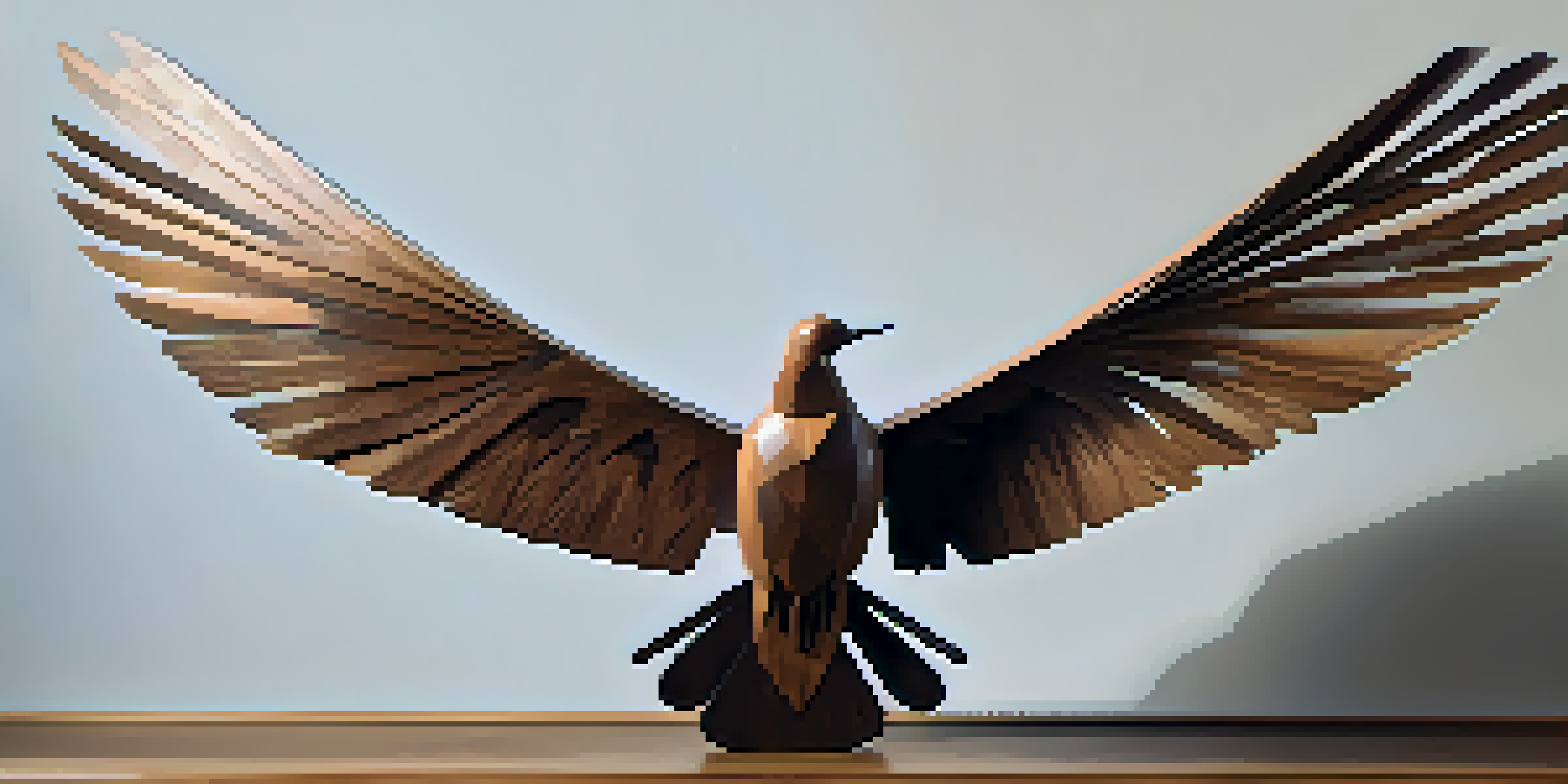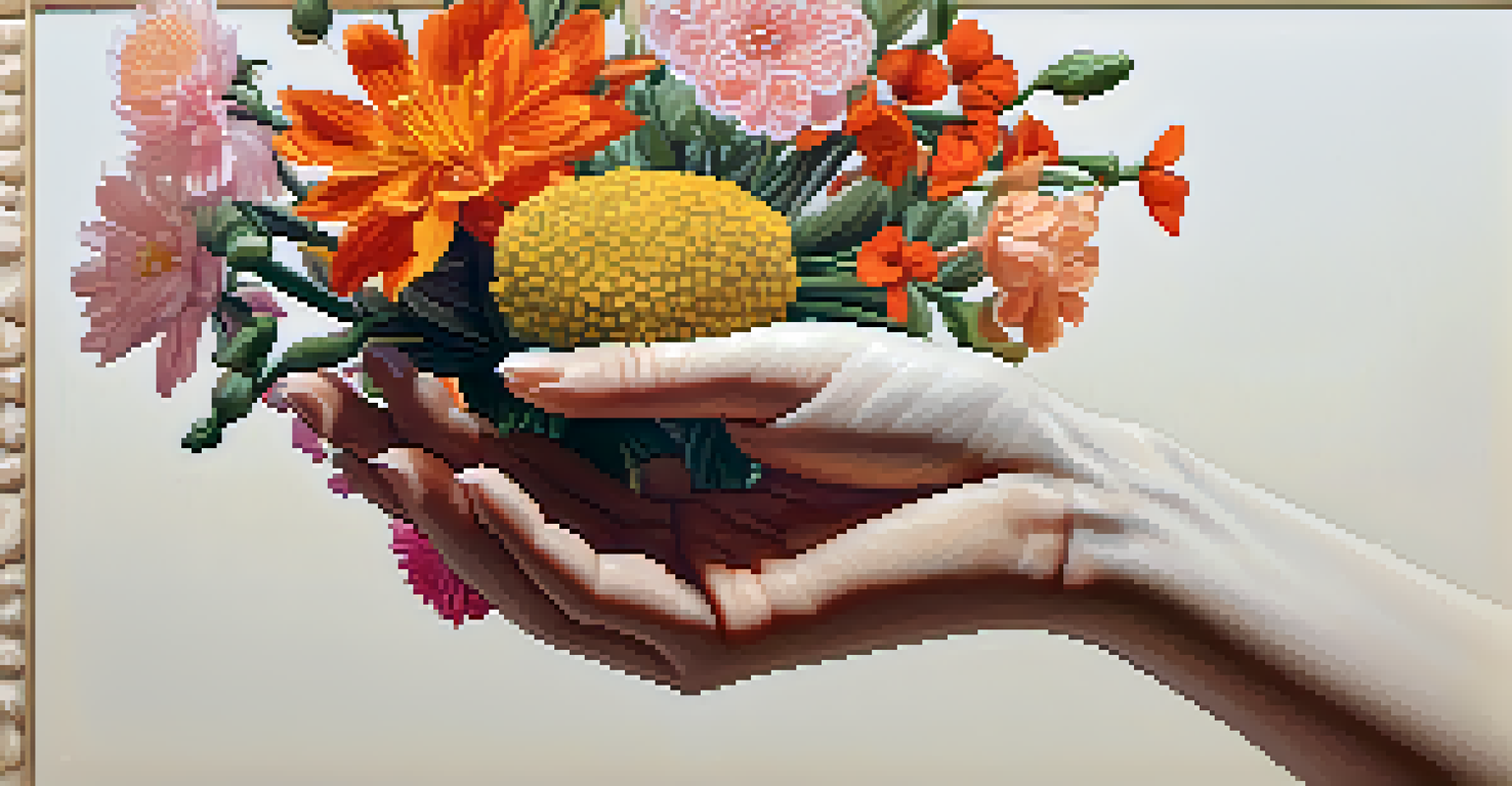Using Contrast in Carving: A Guide to Visual Dynamics

Understanding Contrast: The Heart of Visual Dynamics
Contrast refers to the difference between elements, like light and dark or rough and smooth. In carving, it plays a pivotal role in creating depth and interest. By effectively using contrast, artists can guide the viewer's eye and highlight specific features of their work.
Contrast is what makes photography interesting.
Think of contrast as the seasoning in a dish; just as too little can make a meal bland, too much can overwhelm the palate. Striking the right balance is crucial, allowing each carved detail to shine without competing for attention. This balance is what transforms a simple piece into a captivating one.
In essence, contrast is not just about opposition; it's about harmony. When elements work together through contrast, they create a cohesive visual narrative that elevates the overall impact of the carving.
Types of Contrast in Carving: Light vs. Dark
Light and dark contrast is perhaps the most commonly recognized form. It can dramatically change the mood of a piece, drawing attention to particular areas while receding others into shadow. This technique can transform flat surfaces into dynamic compositions that evoke emotions.

For instance, consider a wooden sculpture where the artist carves deep grooves that catch the light differently than the surrounding areas. The interplay of light and shadow not only adds depth but also creates a sense of movement within the piece. This is especially effective in figurative work, where the play of light can accentuate muscle definition or facial features.
The Power of Contrast in Carving
Contrast enhances depth and interest in carvings, guiding the viewer's eye and emphasizing important features.
Ultimately, mastering light and dark contrast can enhance the storytelling aspect of a carving. It invites viewers to explore the piece from different angles, revealing new insights and details with each perspective.
Texture Contrast: Adding Dimension to Your Work
Texture contrast involves the juxtaposition of smooth and rough surfaces, creating a tactile experience for viewers. This can make a carving feel more lifelike and inviting, encouraging interaction. When different textures are combined, the visual narrative becomes richer and more engaging.
The beauty of a face is a reflection of the beauty of the soul, and the contrast of light and shadow shows the full spectrum of both.
Imagine a carving of a tree where the bark is rough and deeply textured, while the leaves are smooth and polished. This contrast not only highlights the natural features but also emphasizes the uniqueness of each element. The viewer's eye is drawn to these differences, creating a sense of curiosity and exploration.
Incorporating texture contrast can also invoke memories and feelings, as we often associate certain textures with specific experiences. By tapping into these associations, artists can create a deeper emotional connection with their audience.
Color Contrast: The Impact of Hue in Carving
Color contrast is another powerful tool in carving, though it requires careful consideration. The use of different hues can evoke emotions, set a mood, or highlight specific areas of a piece. For instance, a vibrant red against a muted background can draw immediate attention, creating a focal point.
When carving with colored materials or applying finishes, artists can enhance contrasts through complementary colors. Think of a piece where warm tones meet cool shades; this creates a dynamic visual experience that keeps the viewer engaged. The right color combinations can lead to stunning visual effects that elevate the overall design.
Types of Contrast to Explore
Utilizing light vs. dark, texture, color, and scale contrast can create dynamic compositions and evoke emotions.
However, it's important to remember that too much color contrast can be overwhelming. Striking a balance ensures that the piece remains cohesive and visually appealing, guiding the viewer's eye without causing confusion.
Scale Contrast: Playing with Size for Visual Impact
Scale contrast involves the use of different sizes to create interest and draw attention. In a carving, varying the scale of elements can lead to a more engaging composition. For instance, a colossal figure next to delicate details can create a sense of awe and wonder.
This technique can also be used to emphasize specific features within a piece. Imagine a carving where a large hand cradles tiny, intricate flowers; this not only highlights the craftsmanship but also tells a story of care and protection. The viewer is invited to explore the relationship between the different scales.
Ultimately, scale contrast can transform a simple composition into a narrative-rich experience. It encourages viewers to interact with the piece, discovering the connections between sizes and their meanings.
Using Contrast to Create Movement in Carving
Movement in carving can be achieved through the strategic use of contrast. By contrasting different elements, artists can create the illusion of motion, leading the viewer's eye in a particular direction. This technique can make a static piece feel dynamic and alive.
For example, a carving of a bird in flight can be enhanced by contrasting the smooth curve of its wings with the jagged edges of branches. This not only adds depth but also creates a sense of action, as if the bird is about to take off. The interplay of contrasts acts as a visual guide, directing attention and enhancing the narrative.
Practical Tips for Effective Contrast
Analyzing designs, experimenting with contrasts, and evaluating from different angles can lead to more engaging carvings.
Incorporating movement through contrast allows artists to evoke emotions and tell stories, engaging viewers on a deeper level. It invites them to explore the piece and feel the rhythm of the carving.
Practical Tips for Implementing Contrast in Your Carving
To effectively implement contrast in your carving, start by analyzing your design. Identify areas where you can enhance light and dark contrast, texture, color, and scale. Sketching out your ideas can help visualize how these elements will interact within the piece.
Experimentation is key; don’t be afraid to try different combinations of contrasts. Use various carving techniques to see how they affect the overall design. For example, you might find that adding rough textures to a smooth surface creates the desired visual effect you're aiming for.

Lastly, always step back and evaluate your work from different angles. This will help you understand how the contrasts play out in real time and ensure that the composition remains balanced and engaging. Remember, the goal is to create a piece that resonates with viewers and invites them to appreciate the nuances of your craft.